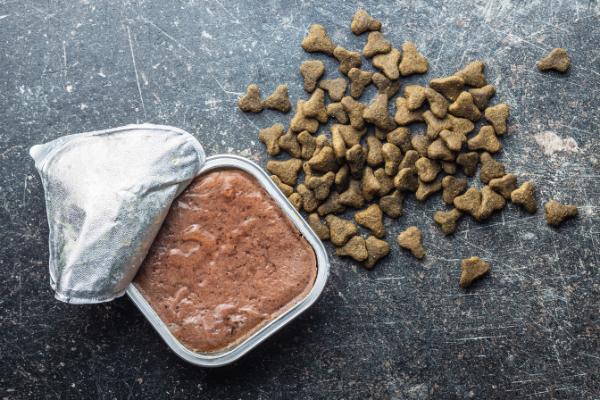Introduction
Brief Overview of Wet and Dry Dog Food
Wet and dry dog foods are the two most common types of canine diets. Wet dog food has a higher moisture content, while dry dog food consists of kibble with low moisture content. The choice between the two depends on various factors, such as your dog’s preferences, health, and lifestyle.
Why Compare Wet and Dry Dog Food
Comparing wet and dry dog foods can help you make an informed decision about the best diet for your furry friend. A proper understanding of the advantages and disadvantages of each type of food is essential for ensuring your dog’s health and happiness.

Understanding Wet Dog Food
Definition and Key Characteristics
Wet dog food, also known as canned or moist dog food, has a high moisture content of around 70-85%. It typically contains a mix of meat, vegetables, and grains, cooked in a broth or gravy.
Benefits of Wet Dog Food
Wet dog food is highly palatable, making it an excellent choice for picky eaters. Its high moisture content helps to keep your dog hydrated and supports kidney health. Additionally, wet dog food often has fewer carbohydrates and artificial preservatives than dry dog food.
Drawbacks of Wet Dog Food
Wet dog food is generally more expensive and has a shorter shelf life than dry food. It also requires refrigeration after opening. Furthermore, it may not be as effective in maintaining dental health, as it doesn’t provide the same abrasive action as kibble.
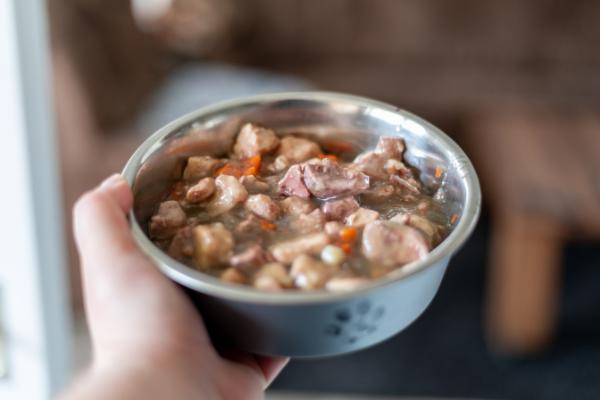
Understanding Dry Dog Food
Definition and Key Characteristics
Dry dog food, also known as kibble, has a low moisture content of about 10-12%. It is made from a blend of meat, grains, vegetables, and added vitamins and minerals, extruded and baked into small, crunchy pieces.
Benefits of Dry Dog Food
Dry dog food is cost-effective, has a long shelf life, and requires no refrigeration. The crunchy texture of kibble helps to clean your dog’s teeth and maintain dental health. Additionally, it is convenient to store and serve.
Drawbacks of Dry Dog Food
Dry dog food often contains more carbohydrates and preservatives than wet food. It may also be less appetizing for some dogs, especially those with a reduced sense of smell or dental issues.
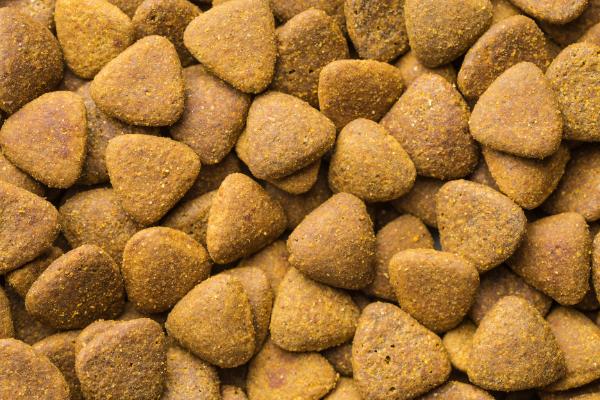
Nutritional Content Comparison
Macronutrient Comparison: Protein, Fat, and Carbohydrates
Wet dog food typically has a higher protein and fat content than dry dog food, while containing fewer carbohydrates. This makes it more closely aligned with a dog’s natural carnivorous diet.
Vitamin and Mineral Content
Both wet and dry dog foods are fortified with vitamins and minerals to meet your dog’s nutritional needs. However, the cooking process for wet dog food may cause some nutrient loss.
Additives and Preservatives
Dry dog food often contains more artificial preservatives to extend its shelf life, while wet dog food relies on natural preservatives, such as tocopherols (vitamin E).

Palatability and Taste
Taste Preferences in Dogs
Dogs have individual taste preferences, just like humans. Some dogs may prefer the taste and texture of wet dog food, while others may enjoy the crunchiness of dry kibble.
How Wet and Dry Foods Appeal to Dogs
Wet dog food is generally more aromatic and flavorful, making it more appealing to dogs with a reduced sense of smell or picky eaters. On the other hand, the crunchy texture of dry dog food can be satisfying for dogs that enjoy chewing.
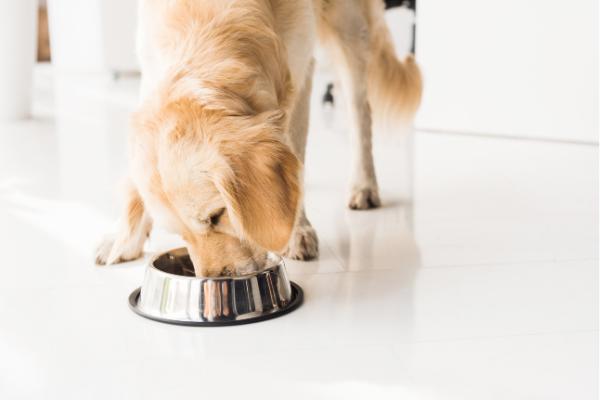
Cost and Convenience
Price Comparison of Wet and Dry Dog Food
Dry dog food is generally less expensive than wet dog food on a per-meal basis. However, it’s essential to consider the quality and nutritional value of the food, rather than just the price.
Shelf Life and Storage
Dry dog food has a longer shelf life and requires no refrigeration, making it more convenient to store. Wet dog food, on the other hand, needs to be refrigerated once opened and has a shorter shelf life.
Feeding and Preparation
Dry dog food is easy to serve and requires minimal preparation, while wet dog food may need to be portioned and warmed up for optimal palatability.

Feeding Considerations
Meal Planning for Your Dog
It’s crucial to consider your dog’s age, activity level, and any health concerns when planning their meals. Both wet and dry dog foods can provide complete and balanced nutrition when chosen carefully.
Mixing Wet and Dry Dog Food
Mixing wet and dry dog food can offer the benefits of both types, such as improved palatability and dental health. However, ensure you maintain the correct calorie intake and nutritional balance for your dog.
Adapting to Your Dog’s Life Stage and Health Needs
Different life stages and health conditions may require adjustments to your dog’s diet. Consult with your veterinarian to determine the best food choice for your dog’s specific needs.
Environmental Impact
Packaging and Production
Dry dog food typically has less packaging waste, as it is often sold in bulk bags. Wet dog food, however, comes in individual cans or pouches, which can generate more waste.
Sustainability Factors
The environmental impact of dog food production depends on factors like ingredient sourcing, manufacturing processes, and transportation. Research different brands to find a company with sustainable practices that align with your values. Some reliable sources for information on sustainable pet food companies include the Pet Sustainability Coalition and the Dog Food Advisor.
Choosing the Right Food for Your Dog
Considerations for Individual Dogs
Each dog is unique, and the best food choice depends on factors like age, breed, activity level, health conditions, and personal preferences.
Reading Labels and Identifying Quality Ingredients
Always read dog food labels carefully and look for high-quality, easily digestible ingredients, such as named animal proteins, whole grains, and vegetables.
Consulting with Your Veterinarian
Your veterinarian is an excellent resource for guidance on the best food choice for your dog. They can consider your dog’s specific needs and recommend an appropriate diet.
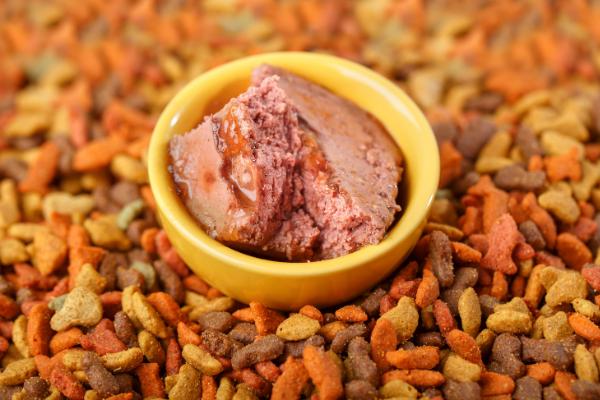
Summary and Key Takeaways
Main Points from Wet and Dry Dog Food Comparison
Wet dog food offers better palatability, hydration, and fewer carbohydrates, while dry dog food provides dental health benefits, cost-effectiveness, and convenience.
Making the Best Choice for Your Dog
Consider your dog’s individual needs and preferences, consult with your veterinarian, and research different brands to make the best choice for your dog’s health and happiness.
FAQs
The main difference is moisture content: wet dog food has around 70-85% moisture, while dry dog food has about 10-12%.
Dry dog food can be better for maintaining dental health due to its abrasive texture, but consult with your veterinarian for specific recommendations based on your dog’s dental issues.
Gradually mix the new food with the old food over 7-10 days, increasing the proportion of the new food each day until it replaces the old food entirely.
Yes, mixing wet and dry dog food can offer the benefits of both types, but be sure to maintain proper calorie intake and nutritional balance.
Check the label for named animal proteins, whole grains, and vegetables, and avoid artificial additives and low-quality fillers. Additionally, consult with your veterinarian for guidance on selecting a high-quality dog food that meets your dog’s specific needs.
